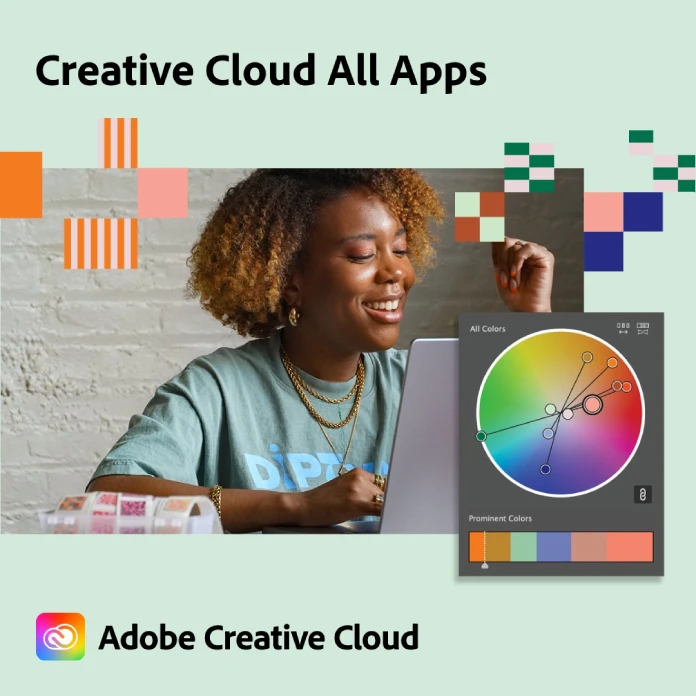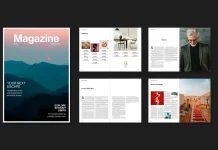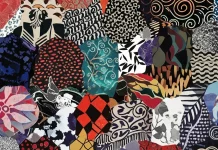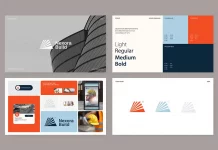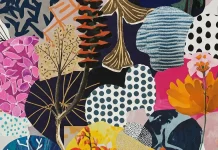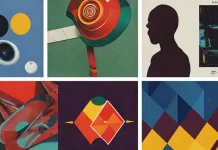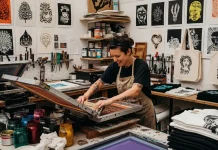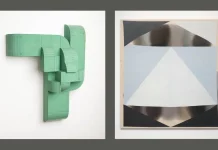Creativity is one of the most sought-after skills in the 21st century. It is the ability to produce new and original ideas, solutions, or products that are valuable and useful. Creativity can help you achieve your personal and professional goals, solve problems, innovate, and stand out from the crowd.
But how can you increase your creativity? Is it something that you are born with or can you develop it? What are the best practices and techniques to boost your creative potential? In this comprehensive guide, we will answer these questions and more. We will show you how to increase your creativity in five easy steps that you can apply to any domain or project. We will also share with you some tips and tools to help you along the way.
By the end of this guide, you will have a clear understanding of what creativity is, why it is important, and how to improve it. You will also have a set of actionable steps that you can follow to unleash your inner genius and create amazing things. So let’s get started!
What is Creativity and Why is it Important?
Creativity is the ability to generate new and original ideas, solutions, or products that are valuable and useful. It is a skill that involves both divergent thinking (generating many possible options) and convergent thinking (selecting the best option).
Creativity is important for many reasons. Here are some of them:
- Creativity can help you achieve your personal and professional goals. By being creative, you can find better ways to do things, overcome challenges, and reach your desired outcomes.
- Creativity can help you solve problems. By being creative, you can identify the root causes of problems, generate multiple solutions, and evaluate their effectiveness.
- Creativity can help you innovate. By being creative, you can create new products, services, or processes that meet the needs and wants of your customers or users.
- Creativity can help you stand out from the crowd. By being creative, you can differentiate yourself from others, showcase your unique value proposition, and attract more opportunities.
Creativity is not a fixed trait that you are born with or without. It is a skill that can be developed and improved with practice and intention. Anyone can be creative if they follow some basic principles and techniques.

How to Increase Your Creativity in 5 Easy Steps
There are many factors that influence your creativity, such as your personality, motivation, environment, mindset, and habits. However, there are also some universal steps that you can follow to increase your creativity regardless of these factors. Here are five easy steps that can help you boost your creativity and unleash your inner genius.
Step 1: Seek Inspiration from Diverse Sources
One of the best ways to stimulate your creativity is to expose yourself to different perspectives, experiences, and domains. You can read books, watch movies, listen to podcasts, visit museums, travel to new places, or learn new skills. You can find plenty of recommended online courses on WE AND THE COLOR. By doing so, you can broaden your horizons, enrich your knowledge, and spark new connections and insights.
Seeking inspiration from diverse sources can help you in several ways:
- It can help you break out of your comfort zone and challenge your assumptions.
- It can help you discover new possibilities and opportunities that you may not have considered before.
- It can help you combine existing ideas in novel ways or create new ideas from scratch.
To seek inspiration from diverse sources, you can try the following tips:
- Read books or articles on topics that interest you or that are related to your project or domain.
- Watch movies or documentaries that inspire you or that showcase different cultures or lifestyles.
- Listen to podcasts or audiobooks that offer valuable insights or stories from experts or influencers in your field or industry.
- Visit museums or art galleries that display different forms of art or expression.
- Travel to new places or countries that expose you to different environments or cultures.
- Learn new skills or hobbies that challenge you or that allow you to express yourself creatively.
Step 2: Challenge Yourself with Constraints
Contrary to popular belief, constraints can actually enhance your creativity rather than limit it. Constraints can force you to think outside the box, find novel ways to use your resources and overcome obstacles. You can set yourself specific goals, deadlines, budgets, or rules to challenge yourself and push your boundaries.
Challenging yourself with constraints can help you in several ways:
- It can help you focus on what is essential and eliminate what is not.
- It can help you simplify complex problems or tasks into manageable chunks.
- It can help you optimize your performance and productivity.
To challenge yourself with constraints, you can try the following tips:
- Set yourself SMART goals (Specific, Measurable, Achievable, Relevant, and Time-bound) that define what you want to achieve, how you will measure your progress, and when you will complete it.
- Set yourself deadlines that are realistic but challenging, and stick to them. You can use tools such as timers, calendars, or apps to help you manage your time and track your tasks.
- Set budgets that limit how much money, materials, or resources you can use for your project or idea. You can use tools such as spreadsheets, calculators, or apps to help you plan and monitor your expenses.
- Set yourself rules that restrict how you can approach or execute your project or idea. For example, you can limit the number of words, colors, tools, or features that you can use.
Step 3: Brainstorm Multiple Ideas without Judgment
Another way to boost your creativity is to generate as many ideas as possible without worrying about their quality or feasibility. You can use techniques such as mind mapping, free writing, or SCAMPER (Substitute, Combine, Adapt, Modify, Put to another use, Eliminate, Reverse) to explore different possibilities and directions. The key is to suspend your judgment and criticism until later and let your imagination run wild.
Brainstorming multiple ideas without judgment can help you in several ways:
- It can help you overcome mental blocks and generate more options.
- It can help you discover hidden potential and opportunities in your ideas.
- It can help you improve your ideas by combining or modifying them.
To brainstorm multiple ideas without judgment, you can try the following tips:
- Use a mind map to visually organize your ideas and show how they are related. You can start with a central topic or question and then branch out into subtopics or questions. You can use tools such as paper, pens, or apps to create your mind map.
- Use free writing to write down whatever comes to your mind without stopping or editing. You can set a timer for a specific amount of time and write continuously until the time is up. You can use tools such as notebooks, keyboards, or apps to record your writing.
- Use SCAMPER to modify your ideas by asking yourself questions based on the acronym. For example, you can ask yourself: How can I substitute something in my idea? How can I combine my idea with something else? How can I adapt my idea to a different context or situation? How can I modify or magnify my idea? How can I put my idea to another use? How can I eliminate something from my idea? How can I reverse or rearrange my idea?
Step 4: Seek Feedback and Collaboration from Others
Creativity is not a solitary endeavor. You can benefit from the input and support of others who can offer you different perspectives, insights, or suggestions. You can ask for feedback from people you trust, join a community of like-minded individuals, or collaborate with someone who has complementary skills or expertise. By doing so, you can learn from others, improve your ideas, and discover new opportunities.
Seeking feedback and collaboration from others can help you in several ways:
- It can help you validate your ideas and test their viability.
- It can help you refine your ideas and identify areas for improvement.
- It can help you expand your network and access more resources.
To seek feedback and collaboration from others, you can try the following tips:
- Ask for feedback from people who are knowledgeable, honest, and constructive. You can ask them specific questions about your ideas such as: What do you like about my idea? What do you dislike about my idea? How can I improve my idea? What are some potential challenges or risks of my idea?
- Join a creative community (like Behance) of like-minded individuals who share your interests or goals. You can find online or offline groups, forums, or platforms where you can exchange ideas, insights, or experiences with others who have similar passions or pursuits.
- Collaborate with someone who has complementary skills or expertise. You can partner with someone who has different strengths or backgrounds than you and work together on a project or idea. You can leverage each other’s talents and perspectives to create something better than either of you could alone.
Step 5: Experiment and Iterate on Your Ideas
Finally, the most important step to increase your creativity is to put your ideas into action and test them out. You can create prototypes, mockups, or sketches of your ideas and see how they work in reality. You can also measure the results, collect feedback, and identify areas for improvement. By experimenting and iterating on your ideas, you can refine them, solve problems, and make them better.
Experimenting and iterating on your ideas can help you in several ways:
- It can help you validate your assumptions and test your hypotheses.
- It can help you learn from your failures and mistakes.
- It can help you optimize your solutions and products.
To experiment and iterate on your ideas, you can try the following tips:
- Create prototypes, mockups, or sketches of your ideas that are simple, cheap, and fast to make. You can use tools such as paper, cardboard, clay, or apps to create your prototypes.
- Test your prototypes, mockups, or sketches with real users or customers and observe how they interact with them. You can use tools such as surveys, interviews, or analytics to collect data and feedback.
- Analyze the data and feedback and identify what works and what doesn’t. You can use tools such as charts, graphs, or reports to visualize and summarize the results.
- Make changes or improvements to your prototypes, mockups, or sketches based on the data and feedback. You can use tools such as scissors, glue, paint, or apps to modify your prototypes.
- Repeat the process until you are satisfied with your final product or solution.

Tips and Tools to Help You Increase Your Creativity
In addition to the five steps above, there are some tips and tools that can help you increase your creativity and make the process easier and more fun. Here are some of them:
- Keep a journal or notebook where you can record your ideas, thoughts, or observations. You can use tools such as pens, pencils, or apps to write or draw in your journal or notebook.
- Use a mood board or a vision board where you can collect images, words, or objects that inspire you or relate to your project or idea. You can use tools such as magazines, newspapers, stickers, or apps to create your mood board or vision board.
- Use a brainstorming app or software that can help you generate, organize, or evaluate your ideas. You can use tools such as MindMeister, Evernote, or Ideaflip to create digital mind maps, notes, or boards.
- Use a creativity app or software that can help you learn new skills, practice creative exercises, or access creative resources. You can use tools such as Skillshare, CreativeLive, or TED to watch online courses, videos, or talks on various topics.
- Use a gamification app or software that can help you make the creative process more fun and rewarding. You can use tools such as Habitica, Forest, or EpicWin to set goals, track progress, and earn rewards for your creative activities.
Conclusion
Creativity is a valuable skill that can help you in many aspects of life. By following the five easy steps in this guide, you can increase your creativity and unleash your inner genius. Remember that creativity is not a fixed trait that you are born with or without. It is a muscle that you can train and grow with practice and intention. So start today and have fun!
Header image by Quarta via Adobe Stock. Feel free to find your creative inspiration on WE AND THE COLOR.
Subscribe to our newsletter!


